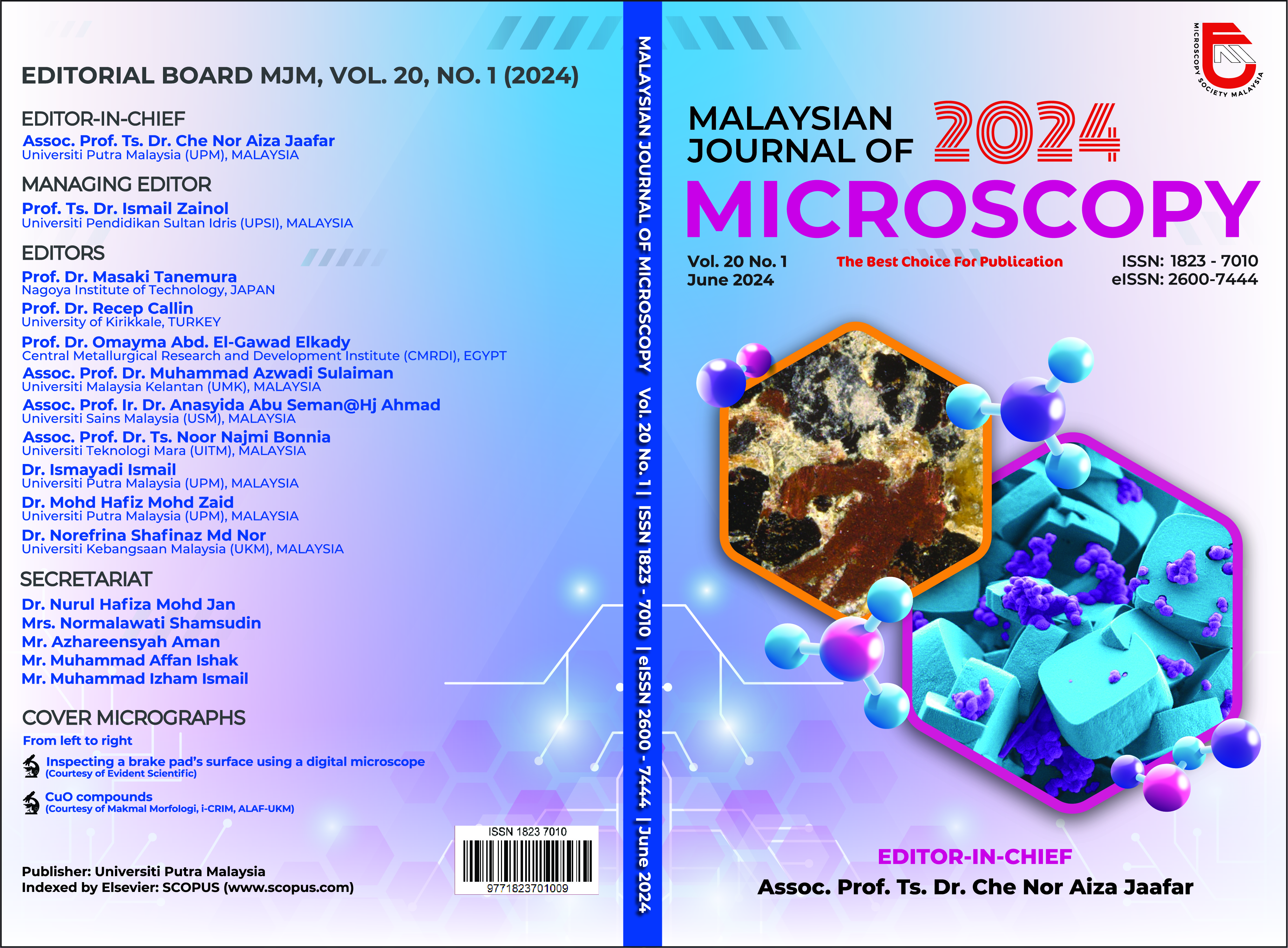EFFECT OF ETHANOLIC PSIDIUM GUAJAVA L. LEAVES EXTRACT ON THE CELL MORPHOLOGY AND RELEASE OF CELL CONSTITUENTS OF MICROORGANISMS
Abstract
Guava (Psidium guajava L.) is a traditional medicinal ingredient widely used in Asia and Africa to treat a variety of diseases, most notably diarrhea. Although several studies have highlighted the antimicrobial properties of guava leaves extracts, research on their effectiveness against foodborne pathogens and spoilage fungi remains limited. This study is to examine the effects of ethanolic Psidium guajava L. leaves extracts on the morphology of foodborne pathogens and spoilage fungi. The antimicrobial mode of action was analyzed using crystal violet dye uptake, cell constituent release assay, and scanning electron microscopy (SEM). The highest uptake of crystal violet for Klebsiella pneumoniae ATCC13773, Listeria monocytogenes ATCC19112, Candida krusei ATCC32196, and Rhizopus oligosporus ATCC22959 at 4× MIC were 77.00%, 70.25%, 78.00%, and 80.00%, respectively. After 4× MIC treatment, the absorbance of cell constituents released by K. pneumoniae, L. monocytogenes, C. krusei, and R. oligosporus was 0.937, 0.880, 0.979, and 0.975, respectively. The scanning electron microscopy (SEM) analysis showed that morphological features in treated microorganisms were changed in cell wall shape. The cells were rupturing, and the cytoplasm was leaking out. Meanwhile, untreated cells assume normal oval, rod, or spherical shapes with a smooth surface. The results revealed that ethanolic P. guajava L. leaves extracts can be used against K. pneumoniae ATCC13773, L. monocytogenes ATCC19112, C. krusei ATCC32196, and R. oligosporus ATCC22959, which are associated with foodborne pathogens and spoilage fungi. The ethanolic P. guajava L. leaves extracts showing its potential for further study, especially in food application as natural food sanitizers.


